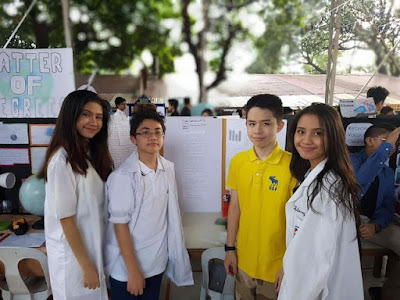Human beings are born to discover. Just look at infants who already want to touch, smell, hear, and taste everything around them before they even celebrate their first birthday! As we grow older, this innate hunger for knowledge is fulfilled by educational institutions that fill our minds with various information. However, many of the data – including complex equations, formulas, historical dates, and scientific facts -- are often forgotten or merely stored and not fully understood.
In fact, numerous studies show that people lose that spark of curiosity through years of learning via rote memorization and repetitive instruction. You see, when we focus too much on what we learn, and not why and how we learn it, creative thinking can become inhibited.
 |
| nurturing curiosity |
This is a significant point, especially in today’s fast-paced, lateral-thinking, and creative-driven world. Yes, traditional methods of education may have produced some of history’s most brilliant minds, but in the past two decades, there has been a radical shift in terms of equipping students with effective skills for real-world success. Under uniform conditions, learning systems that emphasize strict standardization may be ideal but, as many of us know now, not all students learn the same way.
According to Sandy Arellano, a passionate educator at Montessori de San Juan School and an advocate of progressive type of learning, what is happening now is that schools and parents are too fixated on good academic performance. “I can tell you through years of experience, however, that doing well in school is the natural result of a happy, motivated, and well-adjusted student,” she emphasized. “So why not focus diligently on the cause, rather than the effect?”
 |
| "What we learn with pleasure, we never forget." - Alfred Mercier |
Part of Montessori de San Juan’s core objectives, explained Arellano, is to address the downsides of traditional schooling that often result in lethargic, poor-performing children. These drawbacks include:
• over-scheduled students
• too much note-taking and not enough attention to actual lessons
• over-cramming information in a short period of time
• an unreasonable amount of homework that often goes unsupervised during the actual process of completion
• a one-size fits all mentality for learners
 |
| play is the brain's favorite way of learning |
“Are our students less busy or less equipped?” asked Arellano. “Quite the opposite. Our children have such a love for learning, and a genuine excitement to go to school and practice what they are taught, that they consistently end up scoring higher than their peers in standardized tests.”
Moreover, she believes that schools should likewise make a determined effort to provide students with an environment that makes them feel empowered rather than constrained. “Each student is an individual, and different from all others. Children have their own special way of learning and understanding things,” noted Arellano. “Attempting to fit all of them into a rigid and standardized structure may not maximize their full potential.”
 |
| teachers who love teaching, teach kids to love learning |
Reasonably, a small class size is vital for teachers to know the needs of each and every student. In Montessori de San Juan, there are around 150 students from grades 1 to 12, with approximately 12-15 students per class. With small groups like these, it becomes easier to gauge whether a child is a visual, tactile, or auditory learner. From there, teachers can better assess their approach to the students.
Arellano added that another education issue nowadays is too much time spent presenting material to students, leaving very little time for practice, which leads to piles of homework. “In our school, everything is worksheets, modules, and hands-on activities related to the subject matter.” Moreover, in the classroom setting, students are grouped in wider age spans, namely 3-6, 7-9, and 10-12 to help them form relationships and bonds with kids of different ages.
 |
| MDS encourages bonding between kids of different ages |
As students get older, the teaching method becomes semi-progressive and the setup semi-traditional, adding textbooks into the mix. With age also comes a bit of homework kept at a minimum since teachers assess their students through classroom performance. “Our classroom activities involve 90 percent application and only 10 percent discussion, so a lot of the kids are able to see the practicality and the use of the subject matter they are learning,” explained Arellano. “We try to show them the direct applications to what they are learning.”
With numerous success stories regarding progressively educated children, Montessori de San Juan is gaining quite a reputation as an elite institution. The school, however, remains grounded in its mission to cultivate students who love learning so much, and learn so well, that they will be able to learn whatever needs to learned in the future. With these indicators, the school is definitely and successfully fulfilling its goals.
 |
| the future belongs to the curious |
Learn more about Montessori de San Juan by calling 725-6306 or 239-1102 or visiting montessoridesanjuan.com.ph








No comments:
Post a Comment